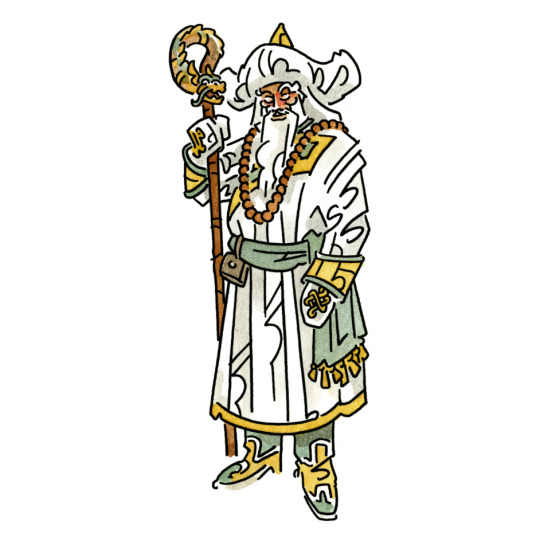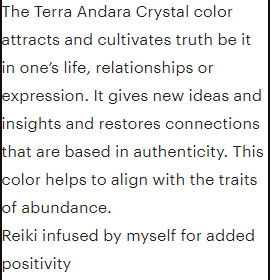#Yellow Shamanism
Photo

Companions of Christmas 23: Sagaan Ubgen!
Sagaan Ubgen, the Mongolian guardian of longevity, lives at Lake Baikal, the deepest (and oldest) lake in the entire world, where he has given winter gifts and hospitality to travelers at the lunar New Year for as long as anyone can remember.Since meeting the Buddha (one of his many visitors) about two and a half thousand years ago, he has attempted to take up meditation, but is constantly interrupted by his talking dragon staff, who worries that enlightenment may bring with it vegetarianism, and thus fewer shared meaty morsels.A lover of food, drink, and merriment, Sagaan Ubgen hosts a post-holiday retreat for his gift-giving peers, which offers them an opportunity to share stories, talk shop, and catch up after the busy gifting season.
#Sagaan Ubgen#Yellow Shamanism#White Shamanism#Tibetan Buddhism#Lunar New Year#New Year Celebrations#Companions of Christmas
56 notes
·
View notes
Text




Renamon EX4-024, Youkomon EX4-026, Doumon EX4-028, and Kuzuhamon EX4-030 by banira from EX-04 Theme Booster Alternative Being
#digimon#digimon tcg#digimon card game#digisafe#digica#デジカ#Renamon#Youkomon#Doumon#Kuzuhamon#banira#EX4#digimon card#color: blue#color: yellow#type: data#trait: beastkin#trait: mysterious beast#trait: wizard#trait: shaman#num: 02#rarity: c#rarity: u#rarity: sr#Lv3#Lv4#Lv5#Lv6
209 notes
·
View notes
Text

#shaman king#shaman king flowers#yohane#art#in like 2016 i drew yohane and adelies in a yellow bg and that particular combination has been stuck in my brain since then
36 notes
·
View notes
Text


#blue dragon#blue calcite#bleu calcite#bleu#crystal#minerals#watermelon fluorite#Yanagi Healing Hands Of Yāna#柳#桃殿#dragon#yellow#kimono#pink#green#magenta#purple#shaman art#shamanic journey#love#compassion#ynlnntm_swatches#ynlnntm#柳 Alnitak zè Ôri#spiritualité#life#shaman#indigenous art#indigenous healer#mountain goat
2 notes
·
View notes
Text

3 notes
·
View notes
Text
I'm having a hot (yellow bile & blood) pre-socratic shaman girl summer
#blood#yellow bile#slay the black bile away#four humors#alchemy#ancient medicine#philosophy#shaman#fire#air
4 notes
·
View notes
Text
"New" son

#warcraft#world of warcraft#wow#zandalari#troll#oc#original character#shuiva#mage warlock multiclass#he's deranged (arataka reigen kinnie)#accidentally joined the shaman polycule#yes i'm bitter that pc zandas can't have yellow eyes
6 notes
·
View notes
Photo

The Yanomami Struggle Visions from the world of the xapiri, with its houses, mirrors, and paths, 1978–81
Artwork © André Taniki. Collection of Fondation Cartier pour l'art contemporain
Claudia Andujar’s Remarkable Art and Activism in the Amazon

Such are the paths of the xapiri when they descend into the house of the shamans, 2003
Artwork © Joseca Mokahesi. Collection of Bruce Albert

Hii Hi frare frare [Tree with yellow trunk], 2021
Artwork © Sheroanawe Hakihiiwe. Collection of Fondation Cartier pour l'art contemporain
#andre taniki#artist#art#artwork#yanomami struggle#indigenous people#xapiri#culture#joseca mokahesi#shamans#sheroanawe hakihiiwe#tree with yellow truck#hii hi frare frare
1 note
·
View note
Text



#Spiritanimals#shamanism#poweranimal#Animals#Power#Wisdom#Positivity#digitalart#art#illustrator#Yellow
0 notes
Text
Buyers Beware - Andara "Crystals"
TLDR: It's glass slag with buzzwords sold for an iPad's worth of money.
Explanation and examples below the cut.
Archive of post.
Andara crystals are said to contain the prima-materia of alchemic fame, found by a Native shaman on a sacred site near a spiritual vortex, often claimed to be Mt. Shasta in California. Andara crystal is said to be both Atlanean and Lemurian; a stone of ascended masters, saints, and angels that vibrates in higher densities. It can clear "electromagnetic smog," activates and aligns all chakras, and accelerates spiritual growth. They are also said to be monatomic, completely missing the point of the term, which is often applied to gases made of one atom, such as helium.
What is slag? Smelt byproduct, which is notably not natural crystal or glass. Andara crystals have comparable composition to artificial soda-lime glasses over natural glasses like obsidian. Glass is not monatomic; it is commonly made from silicon dioxide, the same material as quartz.
Do you want to know how much they sell for?



Below is a search for glass slag.



Pretty similar in appearance, huh? That yellow piece is very pretty; I bet I could take it for 12$ and sell it as "Golden Light Pleiadean Ascended 6D Shaman Monatomic Andara Crystal" for 500$, and someone would buy it for that amount.
Is this worth it because they've shoved a bunch of spiritual words into the title and description promising the sun and moon to you if you pony up the cash for them?



The reason why they price them so high is people do buy them at these prices, because many people have no idea what they're actually buying.
You're not buying communication to angels. You're not buying a spiritual accelerant. You're not buying a chakra opener. You're buying well-advertised glass.
#self post#crystals#EDIT: Added alt text.#Another spinoff from a masterpost on crystals I'm working on#Realised that I shouldn't use the bulk of the post to complain about these bastards when something shorter would suffice#but I didn't want to erase all of what I wrote on them so yeah. Fuck these things.#||#witch 101#witchcraft 101#andara crystal#baby witch#beginner witch#crystal witch#witchblr#witches of tumblr#witch tips#crystal#andara crystals#witch101#wicca#crystal healing
454 notes
·
View notes
Text
Steel in Her Veins, Chapter: Eighteen
Read On: AO3 | Table of Contents | Next Chapter
Characters: Fem!Reader x Roronoa Zoro

Chapter Eighteen: Burn, Demon, Burn
The cavern shudders in the entrance of its mouth. Debris is kicked up into the air like the soot to your smithing; the ashes of what you could only describe as rebirth hangs thickly and desolately in the air.
You struggle to blink through the amount of dust, the dry particles of sand sticking stubbornly to your vision - yet your eyes never look away from his bare back.
He stands in front of you, acting as a barrier of scarred skin and muscle, silently drinking in the enemy before him. Like a predator, he thinks, he watches, his shoulders thrusting forwards…
“Roronoa,” you whisper lowly. You stare at the nape of his neck, focussing on the subtle sweat that baubles there. “Let me talk to them.”
His head twitches to you, and you see the incredulous look that’s sported across his brow.
“You gonna share some tea and biscuits, too?”
“I like tea parties,” you sarcastically mutter. “Do you really want to start a fight against an army of wizards?”
“I like sword fights,” he counters. His back, still unyielding, divides you from the fourty more lackeys that continue filing in, their power-wielding hands threateningly raised in front of their solar plexus’.
Another typhoon of debris coats the cavern’s climate, sweeping into the rhythm of their clambering footsteps; Zoro, unflinching, readies his sword, shoulders squared, a feral glint in his eye.
They all stand in line, stacking themselves into a wall with their scrawny bodies and long-pointed wizard hats. No words are uttered; remaining tight-lipped and hard-eyed, they all wait with baited breaths for the main entertainment to begin.
Oh, and absolutely, it begins.
"Well, well…” A powerful voice heaves thickly in the contained air, the rumble of his graceful footsteps echoing deep into the cavern's marrow.
The wall of wizards divides in half, searing a perfectly straight angle to the landscape beyond the cavern. A silhouette towers over what would’ve been a beautiful view, an ostentatious wizard hat poking through the sky like a sharp-beaked crow.
The Shaman grins.
He advances through the divide, his footsteps almost imprinting the ground that they trace across, and with a yellowed-out smile, his face comes into your and Zoro’s view.
"It’s the demon and her protector. How delightful," he trills.
Your gaze shifts from Zoro to the shaman, apprehensively observing both of their movements. The wrinkled shaman’s eyes blaze with fervour, fuelled by the apparent thirst for your blood, and even the shadows cast by the cave walls seem to writhe in response to his undeniable want.
Taking a deep breath, you step forward. Immediately, the minions raise their arms up higher to their chests, and the shaman’s resentful eyes burns deeper into yours.
“I’m Raya…I’m a blacksmith,” you slowly say, raising a hand up in peace, the other resting on your dagger. “This is entirely a misunderstanding. I’m willing to resolve this peacefully if you are too.”
The shaman sneers, a twisted grin contorting his features. "Peace? The only peace that awaits you is in death."
“No.” You shake your head, maintaining a neutral expression across your face. "We can leave this place and never return. No more trouble for you or your people."
The shaman's laughter echoes through the cavern, his bright earthy eyes sharpening with each passing second.
"Your kind has caused chaos for far too long,” he spits at you, his fumbling fingers spinning in arcane energy. “Your kind is an abomination.”
The lackeys inch closer, their hands glowing with a tinge of ochre oranges and golds. Zoro, with a bitten back growl, tightens his grip on his sword, advancing a step closer to them.
"She’s giving you a chance to leave," Zoro warns, his voice cutting through the tension. "Take it."
The shaman's expression twists into curiosity, his eyes flickering to the swordsman in front of you. "No, foolish samurai, it all ends now."
And everything, all at once, becomes undone.
The lackeys surge forward, their hands emitting a wave of teeth-gritting power in your direction. Zoro charges into the fray, swords slicing through the arcane energies, as you, too, move with agility, the dagger in your hand deflecting their blinding light.
The shaman's raises his arms in revelation, his voice dripping with drunken pleasure.
"It all ends now. It all ends now."
As if a dam has burst, the enemy surges forward, balls of energy glowing golder and brighter within the centre of their chests.
Zoro charges into the fray with primal determination, the sword in his hand splitting through the ethereal onslaught with a hiss to his metal. In tandem, you move with an agility born from blood, the dagger in your hand slicing the energy with a dance of fury.
"This doesn't have to end in bloodshed!” You scream out, thrusting your dagger against an attacking hand. “Let us leave, and we swear to you we’ll never come back."
“Denied,” the shaman grins widely, a typhoon of dark energy convulsing within his fingers.
And in a single, swift motion, he aims his finger at you.
It all happens so quickly – neither you nor Zoro have the time to react.
The energy leaves his towering body, zapping into your blackened arm like the massive jaws of a convulsing animal. Your head snaps down, the blood rushing into your ears, your eyes widening in shock, and your breath lodging in your throat.
Although the adrenaline within you blocks any idea of pain, there’s an undeniable feeling of warm wetness that lingers across your skin. From your shoulder, down to your forearm, all the way down to the end of your wrist, a large slash slowly unsews from your skin, your body so easily unravelling under the shaman's fingers. The air hisses as your blood meets the atmosphere. And it sizzles.
Your blood sizzles on your skin, loud and heavy and metallic. And it burns within your bones like poison.
The shaman guffaws heavily, maddened eyes drinking in your frozen frame.
"Burn, demon, burn!" He yells, already pointing his fingers again at you, a ball of darkness growing within their tips.
Zoro immediately advances towards the shaman, a forceful slash thrown at his back. His grey eye, uncontrolled and drunk on rage, is widened beyond belief, the sword shaking in his hand as he shoves him away from your line of sight.
"Lay another finger on her, and I'll cut all your limbs off," Zoro bellows furiously, hissing and spitting in a voice that you've never heard come from him, dark and uncontrolled and incredibly not calm.
And although the wound in your arm continues to untether and de-skin itself, you keep on fighting. With the last remaining shreds of your energy, you fight through the unbreathable pain; the very air pulses with palpable tension as you attack and deflect, spin and thrust, until the edges of your vision finally blur into a ragged darkness.
Blood, the essence of life turned macabre, begins to spurt from your mouth in a crimson cascade. As the vitae meets the cool cavern air, it sizzles and burns, leaving third-degree kisses of pain across your skin. Almost instantly, your steps falter, teetering on the precipice of collapse.
"Hey!" Zoro's voice reverberates through the cavern, his terrified eye fixated on you from a distance. But before you can muster the words to tell him to stop, to turn around and leave you there, another gush of blood escapes your lips, and you choke, your eyes locked on his.
The world swirls in disorienting patterns, pain in your arm and the burning sensation in your mouth blending into a symphony of agony. Despite your struggle, Zoro charges in your direction, his voice laced with urgency and concern.
"Hold on. I've got you," he urgently hisses, strong fingers gripping your shoulders, a palm pressing firmly against your bleeding wound.
"Your blood betrays you, demon. Burn, demon, burn," the shaman taunts, his words a haunting echo in the cavern's twisted symphony.
Zoro, with every stroke of his swords, fights not just against flesh and magic but against the encroaching darkness threatening to consume you both. Your vision dims further, the edges of consciousness slipping away like sand through grasping fingers.
But before darkness consumes your vision, your body throbs aggressively within Zoro’s grasp.
BA-DUM.
The green-haired samurai snaps his head down at you, feeling the chaotic vibration within his palms.
BA-DUM.
With a heavy, pulsating beat, you scream out loud, piercing the cavern with your awful shrill.
BA-DUM.
The blood stings. Everything stings. Your arm feels untethered - your body, a bouncing ball.
BA-DUM.
And with one last howl, your body contracts, expands, and… explodes.
BA-DUM.
No. You dizzily look down to your body, seeing that everything’s still intact. You didn’t explode, no.
“What the fuck just happened?” Zoro yells out, gaping at the landscape above you. You tilt your head up, realising that none of the lackeys are there. The Shaman, too.
BA-DUM
But wait. They’re there. Outside the cavern, teetering off the edge of the mountain. Airborne but colliding aggressively with eachother.
BA-DUM
Colliding against each other within an invisible sphere of wind. A bitingly ferocious, yet perfectly controlled tempest ensures within the invisible borders of their ragged bodies, swirling in a way you could only describe as animalistic.
BA-DUM
Hah. You laugh a little to yourself, drunken from the sampled taste of death. They look like flying confetti strings, all tangled within each other. Absorbed by such a gluttonous typhoon.
Zoro shakes your shoulders, and your eyes blurrily graze across his face. He’s saying something – his mouth’s open, a helpless look on his face, the vibrations of his voice running through your body… but you can’t hear him.
You look back to the typhoon, the energy of growling wind ingraining itself so perfectly within the mountainous landscape.
BA-DUM.
It looks exactly like something your old man could wield.
#one piece#one piece zoro#roronoa zoro#roronoa zoro x reader#zoro#one piece luffy#luffy#monkey d luffy#one piece ace#straw hat pirates#usopp#sanji#tony tony chopper#nico robin#straw hat luffy#one piece fanfiction#one piece fic#one piece fanfic#op fanfic#op fandom#female reader x zoro#zoro x female reader#zoro x fem reader#three sword style#zoro roronoa#zoro rorono x you#zoro roronoa x y/n#straw hats
62 notes
·
View notes
Text

Kazuchimon BT7-041 Alternative Art by Tonamikanji from BT-07 Booster Next Adventure
#digimon#digimon tcg#digimon card game#digica#デジカ#BT7#AA#Kazuchimon#Tonamikanji#digimon card#color: yellow#Lv6#type: vaccine#trait: shaman#trait: god man#num: 01
37 notes
·
View notes
Text

Title: Psychic Abilities: First Steps
Suggested Reading
Biases in Witchcraft
Dualities
Psychic Abilities & Mental Illness
Shadow Work: First Steps
Energetic Senses
The Subtle Body
Warding Basics
*- Closed or Semi-closed cultures/practices
This article uses yellow text, which may be difficult to read outside of dark-mode.
Understanding Psychic Abilities
Psychic abilities often refer to skills or talents enabling individuals to gain information or influence beyond the scope of human senses or scientific understanding. Such capacities are frequently posited to transcend the boundaries of time, space, and matter. While they can be classified into various types – such as clairvoyance (perceiving remote or hidden information), telepathy (transmitting thoughts), and precognition (predicting future events) – the mechanisms underpinning these phenomena remain the subjects of controversy and speculation.
Historical Perspectives
Throughout history, diverse cultures have recognized and integrated the notion of psychic phenomena into their daily lives and spiritual practices. From ancient civilizations like the Greeks and Egyptians, who consulted oracles and seers for guidance, to indigenous tribes who believed in the power of shamans and medicine people to communicate with forces beyond human perception, psychic phenomena have occupied a significant niche.
In the medieval period, psychic occurrences were often intertwined with religious or supernatural explanations. Those who claimed to possess these abilities were either revered as divinely gifted or, conversely, vilified and persecuted for heresy or witchcraft. Notably, the Renaissance and Enlightenment periods began to scrutinize such claims, emphasizing empirical evidence and rationality. This shift led to a decline in the public acceptance of psychic phenomena as mere superstitions or the result of charlatanism.
Modern Interpretations
In contemporary times, the debate surrounding psychic phenomena has bifurcated into two dominant perspectives: the skeptics and the proponents.
Skeptics, often armed with a scientific background, posit that claims of psychic abilities lack empirical evidence. They argue that such phenomena can be explained by cognitive biases, logical fallacies, or mere coincidences. For instance, the confirmation bias might lead someone to remember only the instances when a psychic prediction was accurate and dismiss those when it was not. They also highlight instances where purported psychics have been exposed as frauds, using tactics such as cold reading to feign genuine abilities.
On the contrary, proponents assert that the existence of psychic abilities is a genuine and untapped dimension of human potential. While acknowledging that fraudulence exists, they argue that there are genuine cases that defy conventional explanations. They contend that science, in its current form, may not be adequately equipped to understand or measure these phenomena. Some postulate that advancements in neuroscience, consciousness research, or quantum physics might one day elucidate the enigmatic nature of psychic abilities.

Types of Psychic Abilities
Clairvoyance
Derived from the French words "clair" (clear) and "voir" (to see), clairvoyance essentially translates to "clear seeing." Clairvoyance refers to the claimed ability to gather information about an object, person, location, or event without any known humanly means. This phenomenon is often described as receiving visual information in the form of symbols, colors, or visions. Throughout history, many societies have revered clairvoyants as powerful figures. In some cultures, they played significant roles as advisors to rulers or as mediators between the physical and unseen worlds. Contemporary society, with its emphasis on empirical evidence, often views clairvoyance with skepticism, yet there remains a persistent cultural fascination with this ability. In many spiritual traditions, clairvoyance is seen as a heightened state of consciousness, a gift or a skill that connects the individual with higher dimensions or spiritual guides.
Telepathy
Stemming from the Greek words "tele" (distant) and "pathos" (feeling), telepathy can be understood as "distant feeling." Telepathy is the purported transmission of information between individuals without using known human sensory channels or physical interaction. It encompasses the transfer of emotions, thoughts, or even complex ideas. From ancient legends to modern science fiction, telepathic communication has captured the human imagination. While empirical research in telepathy remains inconclusive, it is a recurrent theme in popular media, underscoring the human yearning for connection. Mystic traditions may regard telepathy as a manifestation of universal interconnectedness, suggesting that at a deep level, all consciousness is one and separateness is an illusion.
Precognition
The term derives from the Latin "prae" (before) and "cognitio" (getting to know), effectively meaning "foreknowledge." Precognition involves knowledge or perception of future events before they occur, without any logical basis for such foreknowledge. This might manifest as dreams, feelings, or intuitions. Predicting the future has been a universal human pursuit, with precognitives often serving crucial societal roles as prophets, oracles, or seers. However, contemporary views on precognition are split, with skeptics pointing to cognitive biases as explanations. Many mystical traditions suggest that time, as humans perceive it, is an illusion. In such a framework, precognition might be understood as accessing timeless dimensions where past, present, and future coexist.
Claircognizance
"Clair" (clear) combined with "cognizance" (knowledge) indicates "clear knowledge." Claircognizance denotes an intuitive ability to just "know" something, without any logical basis or prior information. Individuals with this ability might suddenly know facts, insights, or understandings without knowing how they acquired them. The concept of inherent knowledge or insight is recognized in many cultures, often attributed to divine inspiration or profound intuition. However, in a world valuing empirical data, such spontaneous knowledge can be met with skepticism. Some spiritual interpretations posit that claircognizance is a connection to universal knowledge or the collective consciousness, suggesting an innate ability to tap into an omniscient source.
Clairsentience
Combining "clair" (clear) with "sentience" (feeling), clairsentience means "clear feeling." Clairsentience refers to the ability to physically feel or emotionally sense the energy or emotions of people, places, or events. This might manifest as gut feelings, sudden mood changes, or physical sensations. Empathy and heightened sensitivity have been recognized across various cultures. While some view clairsentience as a heightened form of empathy, others approach it with caution due to its inexplicable nature. Within mystical traditions, clairsentience might be seen as an enhanced sensitivity to the energy or vibrations of the universe, reflecting a deep interconnectedness of all things.
Compulsion
Derived from Latin "compellere," meaning "to drive or push together." Compulsion, in this context, refers to the purported ability to influence another's thoughts or actions without overt persuasion or physical interference. Historical records are replete with tales of individuals who held sway over masses, their compelling presence seemingly altering the will of others. Modern interpretations often approach such claims with caution, exploring psychological mechanisms behind suggestibility. Some spiritual interpretations suggest compulsion is an exertion of one's will or energy over another, tapping into the subtle dynamics of interwoven consciousness.

Common Misconceptions
While psychic abilities have been recognized and debated for centuries, modern society often conflates them with broader supernatural phenomena. To distinguish: psychic abilities are often defined as potential innate capacities of the human psyche, whereas supernatural phenomena encompass a broader range of occurrences that supposedly defy natural laws. An example of such a conflation might be equating clairvoyance solely with ghostly apparitions or haunted locales, limiting the nuanced understanding of psychic phenomena. This conflation can be attributed to myriad factors, including cultural narratives, folklore, and limited exposure to diverse interpretations of psychic occurrences.
The Hollywood Influence
The entertainment industry, particularly Hollywood, has significantly molded perceptions of psychic phenomena. From sensationalized depictions of mediums speaking to the departed in horror movies to superheroes with telepathic abilities saving the world, these portrayals often prioritize spectacle over accuracy. While they capture the imagination and offer thrilling narratives, they may distort or exaggerate the nuances of genuine psychic experiences.
Hollywood's penchant for dramatization means that psychic abilities are frequently portrayed with an added layer of spectacle, potentially leading the general populace to harbor unrealistic or skewed expectations. For instance, telepathy in movies might be showcased as characters having fullblown conversations without speaking, while actual anecdotal accounts might reference fleeting impressions or emotions.
Skepticism and Belief
Public opinion on psychic phenomena is polarized, with skeptics and believers often at odds. Skeptics caution against gullibility, pointing to instances of fraud, the influence of cognitive biases, and the lack of empirical evidence as reasons for disbelief. On the other hand, staunch believers might dismiss skeptics as close minded or overly analytical.
However, a nuanced view acknowledges that both skepticism and belief have their merits. Blind skepticism might close one off to exploring uncharted territories of human experience, while unbridled belief risks being deceived by charlatans. An informed approach considers available evidence, remains open to possibilities, and constantly seeks deeper understanding, free from dogma.
New Age Influences and How to Avoid Them
The New Age movement, originating in the late 20th century, amalgamates various spiritual and metaphysical beliefs. While it has popularized many esoteric concepts, including some pertaining to psychic phenomena, it often does so without rigorous foundation or context.
To avoid undue New Age influences when exploring psychic phenomena:
Educate Yourself: Delve into historical, cultural, and scientific perspectives on psychic abilities. Understand that the New Age interpretation is just one among many.
Question Sources: Not all literature or speakers on psychic topics are reliable. Discern between those who have done comprehensive research and those echoing popular yet shallow narratives.
Practice Discernment: Be wary of commercialized aspects of the New Age movement, such as workshops or products that promise quick psychic awakenings without any substantial groundwork.
Theosophical Influences and How to Avoid Them
The Theosophical Society, founded in the 19th century, aimed to explore, study, and disseminate knowledge about the mystical and unknown. However, its interpretations of psychic and spiritual phenomena are specific to its doctrine.
To steer clear of Theosophical biases:
Broaden Your Horizon: While Theosophy offers a rich tapestry of esoteric thought, it's essential to explore other cultural, philosophical, and spiritual perspectives on psychic phenomena.
Recognize Distinctive Theosophical Concepts: By identifying core Theosophical tenets, one can differentiate them from other psychic or spiritual beliefs.
Engage in Open Discussion: Interacting with a diverse group of thinkers, researchers, and practitioners can help in discerning Theosophical influences from more universal or varied interpretations.

The Science Behind Psychic Abilities
Psychic phenomena have long captured human curiosity, leading to extensive investigations, both informal and academic. Over the past century, numerous institutions have endeavored to study psychic abilities under controlled conditions. These include efforts by prominent universities and independent research bodies.
One well-documented approach has been the use of Zener cards — a set of five symbols (circle, cross, waves, square, star) — to test for extrasensory perception (ESP). Participants predict the sequence of cards, and results are assessed against statistical probabilities to discern any significant deviations suggesting psychic abilities.
Another area of interest has been the study of telepathy, where participants, often in isolated chambers, attempt to transmit or receive thoughts, images, or emotions. Success rates beyond chance levels could, in theory, indicate telepathic capabilities.
Controversies and Criticisms
Despite the extensive body of research, psychic phenomena remain a contentious topic in the scientific community. Some of the primary criticisms include:
Replicability Issues: A foundational principle of science is that experiments should produce consistent results when replicated. Psychic phenomena, however, often lack this consistency, leading many to question their validity.
Methodological Flaws: Critics often point out potential flaws in the design or execution of psychic experiments. These could range from insufficient controls, potential biases, or even fraud.
Statistical Interpretations: While certain psychic studies claim statistical significance, skeptics argue that these could be anomalies or the result of incorrect data interpretation.
Potential Explanations
Given the elusive nature of psychic phenomena, several hypotheses have been proposed, ranging from the purely physiological to the quantum mechanical:
Subconscious Perception: Some suggest that what's perceived as psychic ability might be heightened sensitivity to subconscious cues. This could mean picking up on subtle body language, temperature changes, or even pheromones.
Quantum Mechanics: Some posit that the nonlocality principle in quantum physics, where particles can be interconnected over vast distances, might provide a framework for understanding psychic interconnections. Though this argument tends to be provided by those who do not understand quantum theory.
Unified Field Theory: Drawing from physics, some speculate that a yet to be discovered unified field might explain the interconnectedness of consciousness. Though this argument also tends to be provided by those who do not understand quantum theory.

Potential Biases Within Scientific Approaches
While the scientific method prides itself on objectivity, biases can infiltrate any field of study, including investigations into psychic phenomena:
Confirmation Bias: Researchers, like all individuals, can unconsciously favor data that aligns with their preexisting beliefs, potentially overlooking data that contradicts their hypotheses.
Publication Bias: Studies producing positive or sensational results are often more likely to be published than those with null or negative findings. This can skew the available literature and public perception.
Cultural and Historical Biases: Western scientific paradigms, rooted in materialism, might inherently dismiss phenomena that don't fit within this framework, whereas other cultures might approach the same phenomena differently.
It's crucial to approach psychic research with an awareness of these biases, ensuring comprehensive and balanced investigations.
Comfort with Paranormal Explanations and Experiences
Across the globe, individuals vary in their comfort levels with paranormal explanations. For some, a spiritual or mystical interpretation of an event is natural and enriching. For others, such interpretations might provoke discomfort, skepticism, or even fear.
Some cultures have rich traditions of spiritual and mystical experiences, making paranormal explanations more accepted and integrated. Direct personal experiences with phenomena that defy conventional explanations can either enhance comfort with the paranormal or, paradoxically, provoke greater skepticism. Awareness and understanding of various phenomena, whether through formal education, personal research, or exposure to diverse viewpoints, can influence one's comfort levels.

Developing Psychic Abilities: A Comprehensive Approach
The initial phase in understanding psychic abilities requires identifying subtle indications that point towards their potential presence. Historically, various cultures have believed in the capability of certain individuals to perceive information hidden from the regular senses. These potential indicators might include:
Heightened Sensitivity: Some individuals report a heightened sensitivity to their surroundings, especially in terms of emotions and energies. They often feel strong empathic connections, allowing them to sense the emotions and moods of those around them, even if subtly expressed.
Frequent Déjà vu: The sensation of having experienced something previously, even when encountering it for the first time, may indicate a potential psychic inclination. While this phenomenon can be explained by various neurological processes, some interpret it as a sign of precognitive ability.
Predictive Dreams: Though dreams often arise from the subconscious mind processing daily events, some individuals note dreams that appear to foretell future events. While not always accurate, these dreams' predictive nature often stands out due to its specificity and detail.
Practice Techniques
To nurture psychic abilities, one must employ certain techniques and exercises that are designed to enhance these potential faculties. Here are some scientificallyacknowledged methods that might be beneficial:
Meditation: Meditation is a tool that aids in focusing the mind and building awareness of one's thoughts and surroundings. By practicing regular meditation, individuals can develop a heightened sense of intuition and possibly tap into deeper levels of perception.
Mindfulness: Being present in the moment can help individuals become more attuned to their surroundings and the subtle energies therein. Practicing mindfulness, like meditation, can be a foundation for honing psychic skills by fostering a keen awareness of the world around us.
Exposure to Varied Stimuli: Engaging with diverse environments, cultures, and experiences can sharpen one's intuitive skills. By exposing oneself to a broad array of stimuli, it becomes easier to identify patterns and connections that might not be immediately obvious.
Consistent Training
Consistency is vital when cultivating any skill, and the development of psychic abilities is no exception. Regular practice and a commitment to growth are imperative. Keeping a record of experiences, feelings, and intuitions can be beneficial. Over time, patterns may emerge, providing insights into the development and accuracy of psychic abilities.
Seeking feedback from trusted sources helps in gauging the accuracy of one's psychic perceptions and offers opportunities for refinement. Engaging with literature and scholarly articles on topics like parapsychology, cognitive science, and neurology can provide a rounded understanding and facilitate better practices.
Identifying Cognitive Bias
While exploring psychic abilities, it is crucial to be aware of cognitive biases. These are systematic patterns of deviation from rationality in judgment, where individuals create their own subjective reality from their perception. Examples include:
Confirmation Bias: The tendency to seek, interpret, and remember information in a way that confirms one's preconceptions. In the context of psychic abilities, this might manifest as remembering only accurate predictions while disregarding inaccuracies.
Apophenia: The human tendency to perceive meaningful patterns within random data. This could lead individuals to believe they've identified significant psychic insights when, in fact, they're drawing connections from unrelated events.
Identifying Mental Illness Symptoms that Seem Like Psychic Abilities
It is essential to differentiate between genuine psychic experiences and symptoms of mental illnesses. Some symptoms can mimic psychic phenomena, such as:
Hallucinations: These are sensory experiences in which a person can hear, see, smell, taste, or feel something that isn't there. While some might interpret these as psychic visions or messages, they are often associated with conditions like schizophrenia or bipolar disorder.
Delusions: Strongly held beliefs despite evidence to the contrary. For example, believing that one has a unique ability to predict events or read minds, when, in reality, evidence does not support these claims.
Hyperactivity and Racing Thoughts: Conditions such as bipolar disorder can lead to periods of hyperactivity and rapidly changing thoughts, which can be misconstrued as psychic energy or heightened intuition.
If you or someone you know shows symptoms of mental illness, you can find a list of assistance and services at the end of THIS article.

Psychic Abilities and the Mind
The intricate network of the human brain, with its myriad neural connections, governs how we think, act, and perceive the world. Central to our understanding of psychic abilities is the role of cognitive functions. These are the mental processes that allow us to carry out tasks, make decisions, and interpret the world around us. A cornerstone of cognition, memory allows us to store and retrieve information from the past. It's been posited that individuals who claim to have psychic abilities might have an enhanced or different utilization of memory, allowing them to recall events or details others might overlook.
The capacity to concentrate on specific stimuli or events in our environment is critical for any psychic exploration. An acute sense of attention might enable some individuals to pick up on subtle cues or information generally unnoticed by the average person. Processing Speed is the time it takes for an individual to interpret and respond to stimuli. A heightened processing speed might allow for faster interpretation of sensory input, which some argue could be linked to certain psychic phenomena.
Role of Subconscious
The subconscious mind, operating below the level of conscious awareness, is a vast reservoir of thoughts, memories, and feelings. Its role in psychic abilities is a topic of significant interest.
Our subconscious continuously processes information, even when we are not actively thinking about it. These processes can lead to sudden insights or "gut feelings" that seem to come out of nowhere but might, in reality, be the result of the subconscious working behind the scenes. While dreams are a regular part of the human experience, some propose that they can serve as a conduit for psychic information. The subconscious mind, active during dreaming, might present information in symbolic or direct ways that could be interpreted as precognitive or clairvoyant insights. The subconscious mind plays a pivotal role in our emotional responses. Some individuals claim to "feel" others' emotions, suggesting that their subconscious minds might be more attuned to emotional stimuli from the environment.
Perception and Intuition
At the intersection of psychic abilities and the mind lies the realm of perception and intuition. These faculties determine how we interpret the world and react to it, and they play a potentially significant role in psychic phenomena.
Enhanced Sensory Perception: Some who claim psychic abilities report a heightened sense of sight, hearing, or other senses. This enhanced perception allows them to detect stimuli that others might miss, potentially leading to insights that seem psychic in nature.
Gut Feelings: Intuition, often described as a "gut feeling," is a form of innate understanding or knowledge without the need for conscious reasoning. While everyone experiences intuition to some degree, its role in psychic abilities might be more pronounced. This intuitive sense might be more developed or refined in some individuals, leading to perceptions that are out of the ordinary.
Pattern Recognition: Humans are naturally inclined to seek patterns in the environment, a trait that has evolutionary advantages. However, some propose that those with psychic inclinations might have an enhanced ability for pattern recognition, allowing them to see connections or insights that might elude others.

Ethical Considerations in the Exploration of Psychic Abilities
The exploration of psychic abilities is not merely an introspective journey; it often intersects with the lives of others, especially when abilities are employed to provide insights or guidance. Herein lies the critical juncture of ethical use versus misuse.
Objective Approach: It is paramount for individuals claiming to possess psychic abilities to approach every situation with an objective mindset. Allowing biases or personal beliefs to interfere can lead to skewed interpretations, which might misguide those seeking counsel.
Financial Exploitation: With the commercialization of psychic readings and related services, there is a risk of financial exploitation. Ethical practitioners should be transparent about their services' costs and avoid exorbitant fees or manipulative tactics that compel repeated visits.
False Claims: Authenticity and truthfulness are fundamental. Individuals should refrain from making unsubstantiated claims about their abilities or the results they can achieve, as this can mislead and potentially harm others.
Respecting Privacy
Delving into the personal lives of others, whether intentionally or inadvertently, comes with significant ethical implications.
Unsolicited Readings: It is ethically questionable to provide unsolicited readings or insights into another person's life or situation. Even if one believes they have valuable information, it is essential to respect boundaries and only offer insights when explicitly asked.
Confidentiality: Similar to medical or therapeutic professions, individuals offering psychic services should maintain strict confidentiality. People's personal information, emotions, and situations should never be divulged without explicit consent.
Consideration of Potential Harm
The potential repercussions of psychic readings or interventions are not always immediately apparent. Therefore, a deep sense of responsibility and foresight is required.
Emotional Impact: Interactions can leave a lasting emotional imprint. Whether the information shared is positive or negative, practitioners must be sensitive to how it might affect an individual emotionally and mentally.
Dependency: There's a potential risk of individuals becoming overly reliant on psychic insights, sidelining their own judgment or decisionmaking abilities. Ethical practitioners should encourage autonomy and personal growth rather than fostering dependency.
Physical Actions: On rare occasions, insights or predictions might prompt individuals to take specific actions in their lives. It's crucial for those with psychic inclinations to understand the weight of their words and the potential physical ramifications they might have on others.

Psychic Abilities in Different Cultures
The concept of psychic abilities, while interpreted differently, exists in some form across various global cultures. Each culture's perspective provides a unique lens through which to understand and appreciate these phenomena.
Eastern Perspectives
In many Eastern traditions, psychic abilities are often interwoven with spiritual and philosophical systems.
Buddhism: Within Buddhist traditions, especially in Tibetan Buddhism*, there are references to "siddhis," which are supernormal powers attained through meditation and spiritual practice. These can range from clairvoyance to precognition. While these abilities are acknowledged, they're often considered secondary to the ultimate goal of enlightenment.
Hinduism*: Ancient Hindu scriptures, particularly the Yoga Sutras of Patanjali, detail various psychic abilities termed "vibhuti." These abilities are said to emerge as one progresses along the path of yoga. However, they're treated with caution and are not the primary focus of spiritual development.
Daoism*: In Daoist traditions of China, psychic phenomena might be attributed to the harnessing of "qi" or vital energy. Daoist practitioners often engage in exercises to cultivate and balance qi, which in turn can lead to heightened abilities.
Western Perspectives
The Western world, influenced by a mix of JudeoChristian beliefs, scientific rationalism, and GrecoRoman philosophies, has its own take on psychic phenomena.
Ancient Greece: Oracles, like the famed Oracle of Delphi, played essential roles in ancient Greek society. These priestesses were believed to possess the ability to communicate with the gods and offer prophecies.
Medieval Europe: During the Middle Ages, individuals who claimed to have psychic abilities or other supernatural powers often faced persecution, associated with witchcraft and heresy.
Modern Era: With the rise of spiritualism in the 19th and 20th centuries, psychic abilities gained renewed interest. While often met with skepticism, especially from the scientific community, there remains a segment of the Western population that believes in and seeks out psychic experiences.
Indigenous Beliefs
Indigenous American Cultures: Among the Navajo*, there are individuals known as "hand tremblers" who are believed to diagnose illnesses or predict events. Similarly, the Lakota Sioux have "heyokas" or sacred clowns, who act in ways contrary to societal norms and offer unique insights.
Aboriginal Australians*: Dreamtime stories and spiritual beliefs play a central role in Aboriginal culture. The concept of "Dreaming" refers to both the ancient stories of creation and the personal dreamjourney of an individual, which can offer guidance and insights.
Shamanic Cultures of Siberia*: The term "shaman" originates from the Tungusic peoples of Siberia. Shamans in these cultures serve as intermediaries between the human and spirit worlds, accessing knowledge and healing through altered states of consciousness.
Maori of New Zealand*: The Maori have "tohunga," experts in specific areas, including those who interpret signs, dreams, and omens. They play a crucial role in guiding societal decisions and understanding the world.
African Cultures: Among the Dagara* of West Africa, there are individuals recognized as having a unique connection to the spirit world, often identified at a young age and trained to serve the community. Similarly, the Zulu* of South Africa have the "sangoma," traditional healers who diagnose and treat illnesses and communicate with ancestors.

Psychic Abilities and Personal Growth
The exploration of psychic abilities transcends mere curiosity about the supernatural. For many, it is an avenue towards profound personal growth, fostering a deeper understanding of oneself and one's place in the larger tapestry of human experience.
Self-awareness and Understanding
The journey into psychic phenomena often demands a heightened sense of selfawareness. This introspective path can lead to significant personal revelations.
Delving into psychic practices necessitates continual selfreflection. This process can unearth previously unrecognized aspects of one's character, beliefs, and motivations. Such insights offer opportunities for personal development and transformation. The exploration of psychic abilities can help individuals distinguish between their inner voice — that intuitive sense of knowing — and the cacophony of external influences. Recognizing and trusting this voice can guide decision making and foster a stronger sense of identity.
Some individuals believe that their psychic inclinations provide clarity about their life's purpose or direction. By tapping into these abilities, they feel more aligned with their personal and spiritual goals.
Emotional and Mental Health
The intertwining of psychic exploration and emotional and mental wellbeing is multifaceted and profound.
Processing Trauma: For some, psychic practices serve as a conduit for addressing and processing past traumas. By confronting these issues, individuals often find a path to healing and acceptance.
Managing Stress: Techniques often associated with psychic development, such as meditation and mindfulness, are beneficial for managing stress. These practices promote relaxation, mental clarity, and emotional balance.
Boosting Confidence: Recognizing and honing psychic abilities can bolster confidence. Individuals often feel empowered by their unique insights and the validation they receive from accurate perceptions or predictions.
Influence on Relationships
The ripple effects of psychic exploration extend into interpersonal relationships, shaping interactions and connections in various ways.
Enhanced Empathy: A heightened sensitivity to the emotions and energies of others can foster deeper empathy. This understanding can lead to more compassionate and supportive interactions with loved ones.
Navigating Conflicts: With increased intuition and perception, individuals might find it easier to navigate conflicts. Recognizing underlying issues or emotions can facilitate communication and resolution.
Building Trust: For those who share their psychic experiences with close friends or family, it can foster trust. When perceptions or insights prove accurate, it reinforces the bond between the psychic individual and those they interact with.
Psychic Abilities and Shadow Work
Shadow work refers to the process of confronting and understanding the darker, often suppressed facets of oneself. The interplay between psychic abilities and shadow work is intricate.
Unearthing Hidden Fears: Psychic experiences can bring to the surface latent fears or insecurities. These revelations, while challenging, are essential for personal growth. By addressing these fears, individuals can move towards holistic wellbeing.
Confronting Denial: Denial is a defense mechanism, shielding individuals from painful truths. However, psychic insights can pierce this veil, forcing a confrontation with realities one might prefer to ignore. This confrontation, though initially unsettling, is a step towards authenticity and selfacceptance.
Integration for Wholeness: The culmination of shadow work, when combined with psychic exploration, is the integration of all aspects of oneself. Recognizing and accepting both light and dark facets lead to a more balanced and whole self.

If you enjoyed this article, and would like to binge more, check out my Masterpost!
Patreon Shoutouts!
Meegs
Jinsu
Thank you so much for your continued support!

Patreon supporters of Mystic ($10/mo) or higher had access to this article 2 weeks in advance. If you'd like to checkout my Patreon benefits, check out this post.
This article was reviewed and edited by ChatGPT
120 notes
·
View notes
Text
happy 4/20 here's some headcanons about the shit bugs used to get elevated
Alcohol: good 'ol alcohol. Found everywhere in every tribe of Hallownest, brewed in pretty much every way possible. Unregulated in trade by pretty much all tribes except for the stuff the Pale King consumes, which is often strong enough to give an entire room alcohol poisoning (wyrms are resistant to pretty much all toxins). Even the Hive have fermented honey and nectar, though they are much stricter about who indulges; it's more often exported for trade than consumed. Among the tribes, limitations only exist among the beetles and mantises, as both have violent tendencies and are liable to pick a fight when drunk; mantises regulate it to festivals and mating season, when sparring is likely to happen anyways, while drunk beetles outside homes and bars are often picked up and stuffed into trash cans to sober them up (and hopefully teach them a lesson in the meanwhile)
Gulka venom: an intoxicating substance with mildly hallucinogenic effects. Unregulated in trade, though that's mostly because there is no trade- the Mosskin refuse to collect it for other tribes, going out of their way only for the snail shamans (who are herb-masters with great healing knowledge) You'll have to harvest it yourself if you want to indulge, and that means there's a bit of a black market for it in Hallownest
Shamanistic Death-Herbs: a blend of relatively common herbs that, when dried together in a certain way, creates an extremely toxic blend if consumed or inhaled (when burned). Typically used to give those suffering a peaceful, painless death, it has powerful hallucinogenic effect under its killing threshold, and is one of the few toxins that can affect void creatures in any way (it puts them to sleep/makes them high). The fear of the void worshipers using them in battle against her moths was one of the excuses the Radiance used for her genocide against the snail tribe, though the shamans themselves have strict oaths to use them only for healing, and have never broken those oaths or used them against another tribe (at least, as far as the few who remember the age of dark can recall)
Bitterroot: an anti-contraceptive and abortion drug that can have an intoxicating-but dangerous- effect if too much of it is chewed. Grows primarily in the Crossroad region, and is heavily regulated in Hallownest- it is easily attainable and available to all, but herbalists are required by law to cut it and sell it in specific portion sizes for different species of bug, to prevent fatalistic overdosing. Tribes with overlap of the growing range tend to follow this rule, though it is not as strictly monitored as in the City (where many different species of bugs congregate, and thus require different doses to be effective)
Lifeblood: A life-boosting substance with magical roots that invigorates the self, at the risk of overestimating limitations and causing irreversible harm to the body when infused with it. This risk, while minimal with supervision, was what the Pale King used as an excuse to ban it, when in reality the main reason for the ban is because it is directly tied to an unascended abyssal god (the Lifeblood creature). Pretty heavily regulated in the Pale King's realm, but is used pretty regularly outside of his lands because nobody outside the most religious of the Beetle Tribe gives a shit
Brightpede poison: an extremely bitter, cyanide-based toxin that, like the death-herbs, can get one high if consumed in extremely small amounts. Secreted by pink and yellow-banded millipedes in the Deepnest region, used most commonly to kill political enemies or ease the passing of mortally wounded individuals. Harmlessly intoxicating to wyrms and their kin
Smokeweed: marijuana. It grows pretty much everywhere in Hallownest where greenery thrives, and is used both recreationally and medicinally, though the extent of it varies from culture to culture. Among the mantises, it's reserved only for strong warriors, to ease pain, battle-rage, and battle-lust. In the City of Tears, use is limited to smokehouses to prevent air contamination in close quarters, but is perfectly legal in private quarters, cheap to buy, and is typically recreational or therapeutic (there is, however, more variation in strains and expensive variants available to those of higher social rank, with the blooms grown in the White Lady's gardens going for the highest). In Deepnest, it's technically limited from the working castes to prevent injury, but is allowed during times of leisure and is unlimited to the injured or sick (if trade allows it). The Mosskin, Snails, and the Moths typically used it for religious reasons. Only the Hive have strict regulations against it (as they do with everything else).
Shrooms: Several species of mushrooms in Deepnest and the Fungal Wastes offer a variety of intoxicating and hallucinogenic effects, with a variety of different toxicity/fatality levels. Really only the Mantids know how to correctly harvest and identify each species responsible for each effect, a secret they hold closely guarded within their own tribe, but that doesn't stop certain individuals from different tribes to come in and sample the shrooms (and, if overdosed, become a fun little treat for the mantises)
The sap and nectar of the White Lady: really only attainable if you go praying to her for reproductive help, as it is an intense healing agent and potent aphrodisiac. Momentarily cures infertility, and brings about a high, but also induces heat. Tea can be made from her bark with similar (but less potent) effects, but again it must be provided from her willingly, and such examples are rare. Technically intoxicating, but only given to those struggling with infertility, miscarriages, suffering from injuries related to childbearing or birth, etc
#hollow knight#hollow knight headcanons#yeah i had to make some of them up but also like. kinda at a limit for bug drugs in canon#most of these dont work on gods rip pk and escaping his depression
218 notes
·
View notes
Text
Nightwolf x Reader (Semi-Lemon)

Warning: Nightwolf eats the forbidden fruit😏
You're also outside in the woods btw
~~~~~~~~~~~~
The idea of spending time outdoors was, of course, your boyfriend's idea, but it wasn't a surprise or anything.
Whatever makes him happy. Though, there wasn't much going on today as you standby, not giving him too much mind as he sharpens his tomahawk with a rock.
Boredom poked at you as you examined a small yellow dandelion, subconsciously picking the many petals off slowly while keeping to yourself.
Nightwolf could clearly see how spaced out you were when he glances up to check on you. He smiles to himself, watching you try to keep yourself somewhat entertained.
The warrior knew you'd prefer to be at home, sleeping or reading those weird books while being secure beside him, but nature has always been his thing.
Setting his weapon to the side, he thought about it for a moment. There really wasn't too much to talk about, but maybe there's something he could do.
He's got a good idea of what he can do.
Standing from the grass, he walks to you. You were just so out of it, you didn't even hear the man's footsteps. You only looked from the flower when he's in front of you, giving you a friendly - maybe more friendly than usual - smile.
The air still filled with silence, Nightwolf caresses your cheek before kneeling down in front of you, still keeping eye contact.
Your e/c eyes still followed his, head tilting down and thinking,'What is he doing?'
Whatever it is, you trust him. Seeing how much admiration sparkles in his dark eyes as he gazes up at you.
His hands trail down your curves, making you feel so adored and warm inside. They were one of your favorite features about him. Strong enough to break you, but instead, handled you with such care.
They stopped at the rim of your leggings, and he slowly pulled them down, giving you the chance to intervene if you weren't interested in what he had to offer. However, you never did.
The air hit your bare legs, and all that was left were your panties. You waited for him to take those off, too, whenever he gets to it.
But the shaman took his time, starting off with tracing the stretch marks on your inner thighs with his fingers. Following, he leaned in to place gentle kisses on both thighs, worshipping you in a way that may compete with the Great Spirit.
Next, he places his lips on the ones down there, through the lightly damp fabric that still shielded you. It made you huff out a low gasp. More soft noises would be drawn from you as his tongue lap your slit slowly through your panties, making you already have enough and drop your panties for him to continue.
His eyes narrowed with a sultry aura, his hand moved your leg to the side so he gets better access to what's rightfully his.
The tip of his tongue meets the sensitive bud, making your hands move to his black hair, careful not to ruin his top bun. You just needed to grab onto something before things get more intense for you. He didn't mind.
His tongue makes its way down to your slit, licking around your entrance neatly before going inside, making you squirm more. Nightwolf keeps you still as his hands held onto your legs with some firmness.
Eyes never leaving yours, you know this is his way of telling you how much he wants you. How much he wants to eat you up and watch you become undone by only his tongue, giving him the chance to taste the ripen fruit. All for him.
All the light whimpering and moans were just the encouragement he needed to lose himself as he performed with you. Burying his face more between your thighs, making his tongue slide deeper to stimulate you as much as he could.
Before you get too loud, you cover your face with your hands, hiding the blush you had and trying to reduce the sounds you spilled out. You didn't forget your surroundings.
However, the sound reduction wasn't so useful as you were getting loud when he brings you close to the knot that squeezes tightly in your belly.
You clutched more onto his hair, jolting your legs more apart, moaning out his name, pleading for him to continue on.
And when you do release, he licked up the blessed liquid, lapping at it like a hungry beast in the wild. Then he leaves a comforting kiss on your thigh once more before he stands, holding you against him to make sure you don't end up collapsing.
He affectionately presses his forehead against yours and whispers praises, even a thanks for allowing him to please you in such a way.
You were very quick to reverse the thanks, feeling you owe him the whole world after that. Hinting that maybe you'd like to do more when you two return to his place.
Your smile gives off the cheeky vibe as you brush your hand over his gorgeous abs.
~~~~~~~~~~~~
Sorry for the weird, rushed ending
┐('~';)┌
#mortal kombat 11#mortal kombat#mortal kombat x reader#mk imagine#mortal kombat imagines#mk headcanons#mortal kombat headcanons#nightwolf x reader#nightwolf#goddesswritings
45 notes
·
View notes
Photo

Germ Theory
The Germ Theory, which emerged in the late 19th century, demonstrated that microscopic germs caused most human infectious diseases. The germs involved included bacteria, viruses, fungi, protozoa, and prions. Louis Pasteur (1822-1895), a French chemist and microbiologist, and Robert Koch (1843-1910), a German physician and microbiologist, are credited with the discovery of the germ theory in the 1860s-1880s.
Regarded as the most important discovery in the history of medicine, the germ theory challenged the medical profession to reevaluate how disease was thought about, offered possibilities for both the prevention and treatment of disease, as well as the discovery and implementation of new technologies to combat disease.
Previously, doctors assumed that disease was an internal process of the human body especially Hippocrates' long-standing four humors theory notion that excesses or deficiencies of four bodily fluids (blood, phlegm, yellow and black biles) led to illness and disease. The germ theory contradicted that idea by separating the disease from the afflicted persons. Furthermore, the new theory ushered in a regimented way of classifying diseases (nosology) according to the type of microorganisms causing the disease.
Historical Theories of Disease
Prior to the discovery of the germ theory, various theories were advanced as possible explanations for illness and disease in humans. The earliest theory was the miasma theory attributed to Hippocrates (460-370 BCE), a Greek physician. Derived from the Greek word meaning pollution or "bad air", the miasma theory suggested that decomposing particles from organic materials, plants or animals, poisoned the air. Although easily detected by smell, people who inhaled the "bad air" would become ill. Additionally, planetary movements, disturbances to the Earth, poor hygiene, and polluted water often contributed to miasma. Attempts to remove waste along with cleanliness were thought necessary to improve the atmosphere to avoid infection and disease.
Aristotle (384-322 BCE), a Greek philosopher, offered the spontaneous generation of disease. It was possible, Aristotle thought, for living organisms to spring from non-living matter. Furthermore, this process, like maggots appearing from dead flesh, was a regular and natural phenomenon.
Galen (129-216 CE), a Roman physician, extended Hippocrates' earlier speculation about the imbalance of bodily fluids as the cause of disease. Galen attached each of the four humors to a particular season characterized by hot, cold, dry, and wet. For example, colds and flues occurred most often during cold and wet weather. Any change in the weather or season could upset the balance of the four humors so treatments were devised to restore said balance e.g., purges, bloodletting, enemas, and vomits. These ancient theories dominated Western medical thinking about illness until the 19th century.
Another theory of the origin of diseases referred to supernatural causes. A person's sins resulted in contracting a disease or illness as a punishment from the gods or God. Ghosts, demons, and evil spirits also possessed the ability to afflict a person with illness. Magic, divination, spells, exorcism, and various drugs were used to diagnose and treat illness. It fell to a variety of healers – shamans, priests, diviners, medicine men – to drive away the evil spirits. Illness as a punishment for sins, as well as a test of faith, was later offered by Christian theologians as an explanation for disease.
Additional theories on the origin of diseases continued to emerge. Girolamo Fracastoro (1476-1553), an Italian physician, is credited with first using the word "contagion" when describing the transmission of illness. His "seeds of disease" theory argued that disease could be spread by direct or indirect contact or over long distances through no contact at all. A German chemist, Justus von Liebig (1803-1873), one of the early founders of organic chemistry, suggested that as a result of a chemical process from decaying organic matter, disease simply emerged in the blood (the body's "chemical factory").
Continue reading...
31 notes
·
View notes